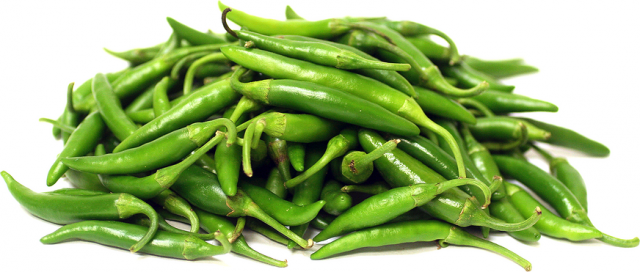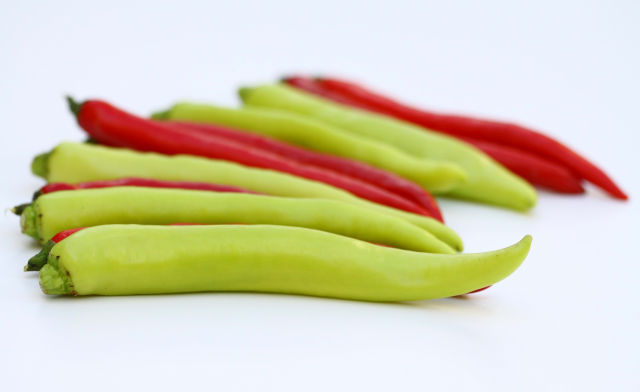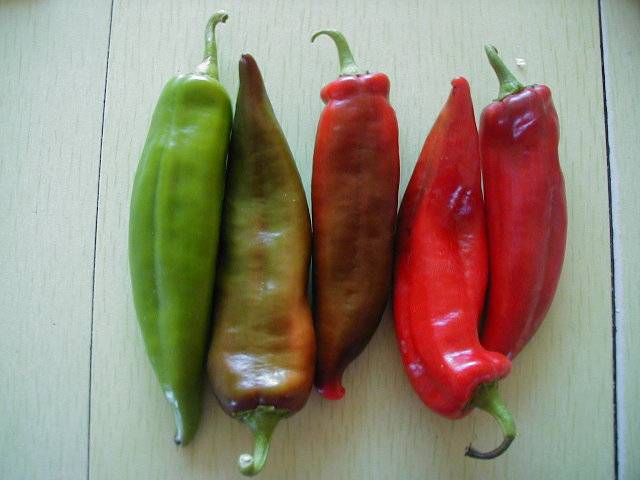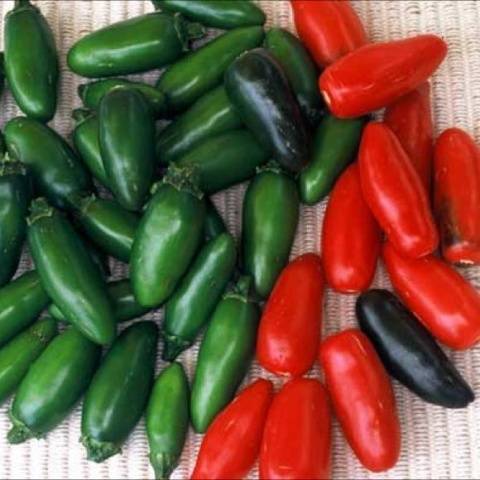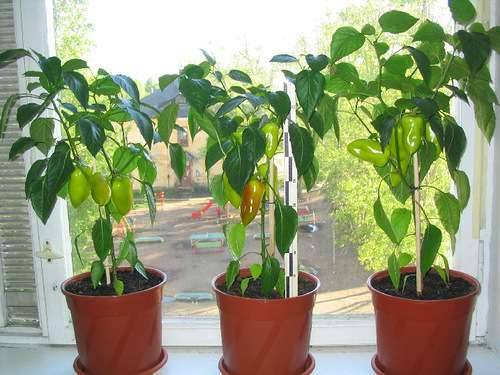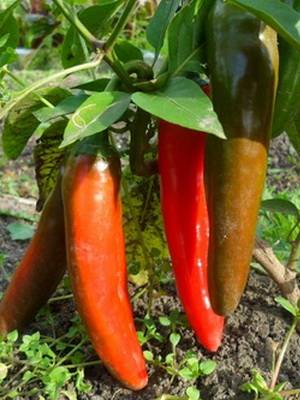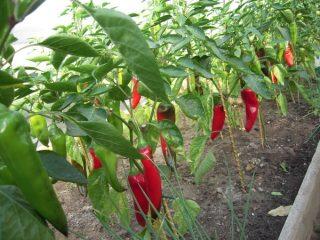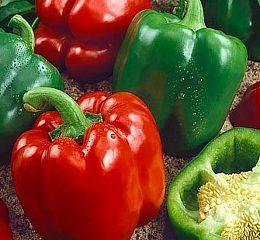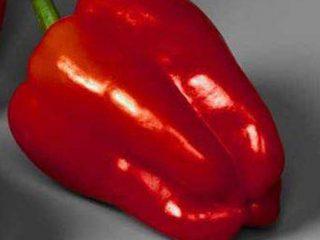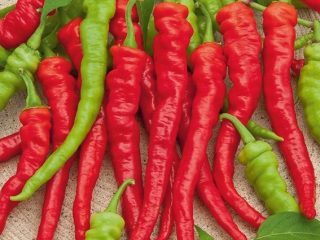Content
Green hot pepper is nothing more than hot pepper Chile that has not reached biological ripeness. It has not yet acquired a bright red color, but has already accumulated a full composition of useful substances. Due to the significant content of vitamin C and capsaicin, green hot peppers are used for cosmetic and medicinal purposes. In addition, they are actively used in cooking.
Benefit
Green pepper is not as hot as red pepper, but is still able to help with pain symptoms of various types, as well as inflammation of the joints. It can relieve the symptoms of arthritis and neuralgia.
In particular, the hot green fruit will be useful for those who are struggling with excess weight. Due to its composition, hot peppers increase body temperature, thereby promoting the breakdown of fat deposits.
Hot green capsicum effectively kills oral infections and helps get rid of intestinal disorders and poisoning. It also has a positive effect on the digestive system.
But all the beneficial properties of this burning fruit pale in comparison to its ability to fight cancer cells. Capsaicin, which is part of it, causes cancer cells to self-destruct without damaging healthy tissue.
Hot pepper may provide health benefits only when consumed in moderation. If consumed excessively, it can only cause harm.
Characteristics of varieties
Since green hot pepper is an unripe fruit of red pepper, it has no special varieties. But there are several varieties of ordinary red hot peppers, which are more popular in their unripe form.
Anaheim
This variety of hot pepper is also known as California chile. It is not difficult to guess that North America became its homeland. The pod of this variety is up to 7 cm long and has a quite pungent taste. Its weight will be no more than 10 grams. Dark green hot Anaheim peppers turn bright red as they ripen.
Hot pepper of this variety can be used with equal success for culinary and medicinal purposes. It is one of the highest vitamin hot pepper varieties. It contains more protein and fiber than other varieties.
Its yield will be up to 0.4 kg of burning fruits per square meter. This yield of this variety can be achieved by planting 8-10 plants per square meter.
Serrano
This hot pepper variety is a Mexican variety. hot chili pepper. It got its name from the Sierra Mountains.Its peppers are quite small - only 4 cm. They are bullet-shaped and have shiny skin. Like other varieties, during the period of technical maturity the fruit is colored green, and during the period of biological maturity it is red.
Due to the thin partitions, this variety of chili pepper is not as hot as other varieties. This significantly expands the possibility of its use in cooking. It is well used as a seasoning for dishes and marinades.
This is a high-yielding variety. Capsicum peppers of the Serrano variety can be harvested after 3 months from the appearance of the first shoots.
Recommendations for cultivation
There are two ways to grow hot peppers:
- On the windowsill.
- In open ground or in a greenhouse.
Let's look at each of these methods.
Growing green hot peppers on a windowsill can not only provide the necessary supply of its fruits, but also decorate any interior due to its decorative appearance. Indeed, during the fruiting period, small green bushes, hung with small fruits, can compete with all house plants.
In order to grow hot chili peppers at home, you need to sow seeds. The best time for this will be February. The entire sowing procedure is quite simple and includes the following steps:
- You need to take any two-liter container and pour boiling water over it.
- Drainage is placed at its bottom - it can be expanded clay, charcoal or crushed stone.
- Soil is poured on top. Its composition includes humus, leaf soil and sand in a ratio of 5:3:2.
- Holes 1.5 cm deep are made on its surface.
- Soaked and slightly swollen seeds are planted in the holes.You can plant 2-3 things in one hole.
- Fresh planting should be covered with polyethylene or glass.
The first shoots of hot pepper will appear in about a week. When their first leaves grow, the young plants need to be replanted. You can also leave them in the selected container, while removing weak and excess shoots.
Any window will suit the plant for optimal growth, as long as it has a lot of light.
Caring for Green Spicy pepper on the windowsill consists only of regular watering. Possible application of fertilizers. Obtaining the first harvest will depend on the selected variety. But as a rule, you should not wait for it earlier than 2 months from the first shoots.
Chili peppers can also be grown in open ground and in a greenhouse. Hot peppers, like their sweet counterparts, are quite demanding of light and heat. Therefore, in the northern regions it is grown in greenhouses.
In other areas it can grow well in open ground. Hot peppers can grow in almost all soils, except particularly acidic ones. It will delight you with a rich harvest of hot fruits when planted on sandy loam, medium loamy soils with a light composition and a neutral acidity level.
In order to grow hot peppers on your site, you need to prepare seedlings. It is prepared in the same way as seedlings of sweet peppers and tomatoes: in February - early March. Before planting in the ground, the seeds must first be soaked.
After germination, you need to wait for the first two leaves and transfer the young plants to separate containers or peat pots. Plants of this pungent crop that have not yet matured do not tolerate replanting quite well, so it must be done very carefully, trying not to damage the root system. Transplanted plants must be protected from any stress: transfers, drafts, temperature fluctuations. The optimal temperature for them will be +20 degrees. In this case, the night temperature should be slightly lower, but not less than +15 degrees.
To do this, containers with seedlings are taken outside and left until the evening. This is done only at daytime temperatures above +10 degrees.
When young seedlings reach 15 cm in height, they can be transplanted to a permanent place. After completing the adaptation period in a new place, the tops of young plants must be pinched. You can understand that adaptation has taken place by the fresh leaves that the plants produce in a new place.
The pinching procedure is mandatory for hot peppers. Without it, the harvest of pungent fruits will be quite poor. Only 5 top shoots should be left on each plant, the rest should be removed.
Further care for hot peppers involves regular watering and feeding. Recommendations for watering plants:
- The water should be rain or settled, but always warm.
- Before flowering, plants are watered no more than once a week. In hot weather, you can increase to 2 times a week. It is recommended to use up to 12 liters of water per square meter.
- During flowering and fruit formation - up to 3 times a week with a rate of up to 14 liters per square meter.
Green hot peppers are fertilized only during the flowering and fruiting period. Good results are shown by adding rotted mullein, ash, a solution of nettle leaves, dandelion and coltsfoot.
In addition, hot peppers respond well to loosening.
If you follow these simple recommendations, green hot pepper plants will delight the gardener with a rich harvest, which contains enormous benefits.
